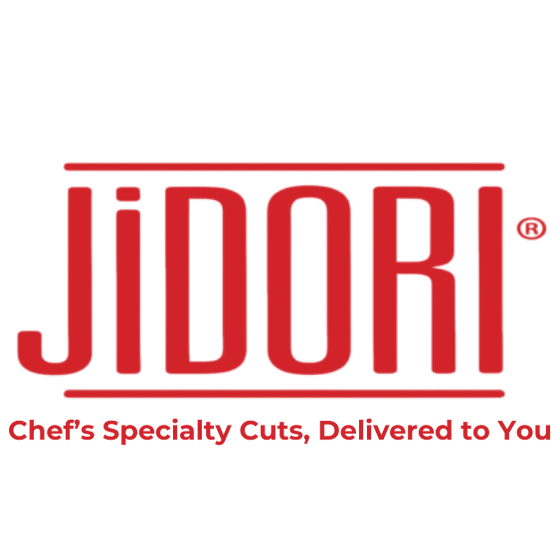Ordering Fresh vs. Frozen Raw Chicken
Choosing Between Fresh and Frozen Raw Chicken

When it comes to purchasing chicken for your kitchen, one of the key decisions you'll face is whether to go for fresh or frozen raw chicken. Both options have their advantages and considerations, and understanding the differences can help you make an informed choice based on your preferences and needs.
Fresh Raw Chicken
What to expect if you order "fresh" Jidori chicken:
Fresh products will arrive completely soft but cold. Temperatures if taken should be 41° F or below when taken internally. The packaging should be without any holes or leakage but will have some moisture and condensation on the outside from the cooling of warm air. After opening your box, store products in your fridge or freezer immediately.
Pros of ordering fresh (not frozen) raw chicken:
- Quality and Texture: Fresh chicken often boasts a superior texture and taste. The meat tends to be juicier and more succulent compared to frozen counterparts.
- Convenience: Since fresh chicken is ready to use immediately, it can save you time in meal preparation. There's no need to wait for thawing, making it an ideal choice for spontaneous cooking.
- Versatility: Fresh chicken offers a wide range of cooking options, from grilling and roasting to sautéing and poaching. The freshness allows you to experiment with various recipes and cooking techniques.
- And if you have a freezer, you can always freeze your unused portions for defrosting at a later time.
Cons of fresh raw chicken:
- Shorter Shelf Life: Fresh chicken has a limited shelf life compared to frozen chicken. It needs to be used within a few days, which may lead to more frequent grocery trips.
Frozen Raw Chicken
What to expect if you order “frozen” Jidori chicken:
FROZEN products will arrive hard internally but may have some softening on the outer parts of each package. This is normal and does not affect the wholesomeness of the product. The packaging should be without any holes or leakage but will have some moisture and condensation on the outside from the cooling of warm air. After opening your box, store products in your fridge or freezer immediately. Also our frozen products are fresh frozen and produced as orders are received.
Pros of ordering frozen raw chicken:
- Extended Shelf Life: One of the primary advantages of frozen chicken is its extended shelf life. It can be stored for months without compromising quality, reducing the need for frequent grocery shopping.
- Meal Planning: Buying in bulk and freezing portions can simplify meal planning. You can have a variety of chicken cuts readily available without worrying about spoilage.
- Quality and Texture: Although not fresh, we only freeze your products after ordering so know that it wasn’t held long and will still taste great.
Cons:
- Thawing Time: Frozen chicken requires thawing before cooking. Planning ahead is necessary to ensure you have enough time for the chicken to defrost properly.
- Texture Changes: Some argue that frozen chicken may not have the same texture as fresh chicken after thawing. However, proper thawing and cooking techniques can mitigate this concern.
How to Safely Thaw Frozen Chicken - Four Proven Methods
- Thawing in a microwave is the fastest method, but remember: Chicken must be cooked immediately after you thaw it using a microwave. That’s because microwaves heat poultry to a temperature between 40 and 140ºF (4.4 and 60ºC), which bacteria thrive in. Only cooking the chicken to proper temperatures will kill the potentially dangerous bacteria.
- Thawing in cold water - this should take two to three hours. To use this method: Place the chicken in a leakproof plastic bag. This will stop the water from damaging the meat tissue as well as any bacteria from infecting the food. Fill a large bowl or your kitchen sink with cold water. Submerge the bagged chicken. Change out the water every 30 minutes
- Thawing in a refrigerator, this method requires the most preparation, but it’s the most highly recommended. Chicken typically takes a full day to thaw, so plan your meals in advance. Once thawed, the poultry can remain in the refrigerator for a day or two before cooking.
- Don’t thaw at all! According to the USDA, it’s perfectly safe to cook frozen chicken without thawing it in the oven or on the stove. The drawback? It will take a little longer — usually, by about 50 percent.
How to Safely Handle Raw Chicken
- Don’t thaw meat on your kitchen counter. Bacteria thrive at room temperature.
- Don’t rinse chicken under running water. This can splash bacteria around your kitchen, leading to cross-contamination.
- Wash hands with warm soapy water for 20 seconds before and after handling chicken.
- Use a separate cutting board for raw chicken.
- Never place cooked food or fresh produce on a plate, cutting board, or other surface that previously held raw chicken.
- Wash cutting boards, utensils, dishes, and countertops with hot soapy water after preparing chicken and before you prepare the next item.
- Use a food thermometer to make sure chicken is cooked to a safe internal temp.
- Refrigerate or freeze leftover chicken within 2 hours (or within 1 hour if the temperature outside is higher than 90°F).
